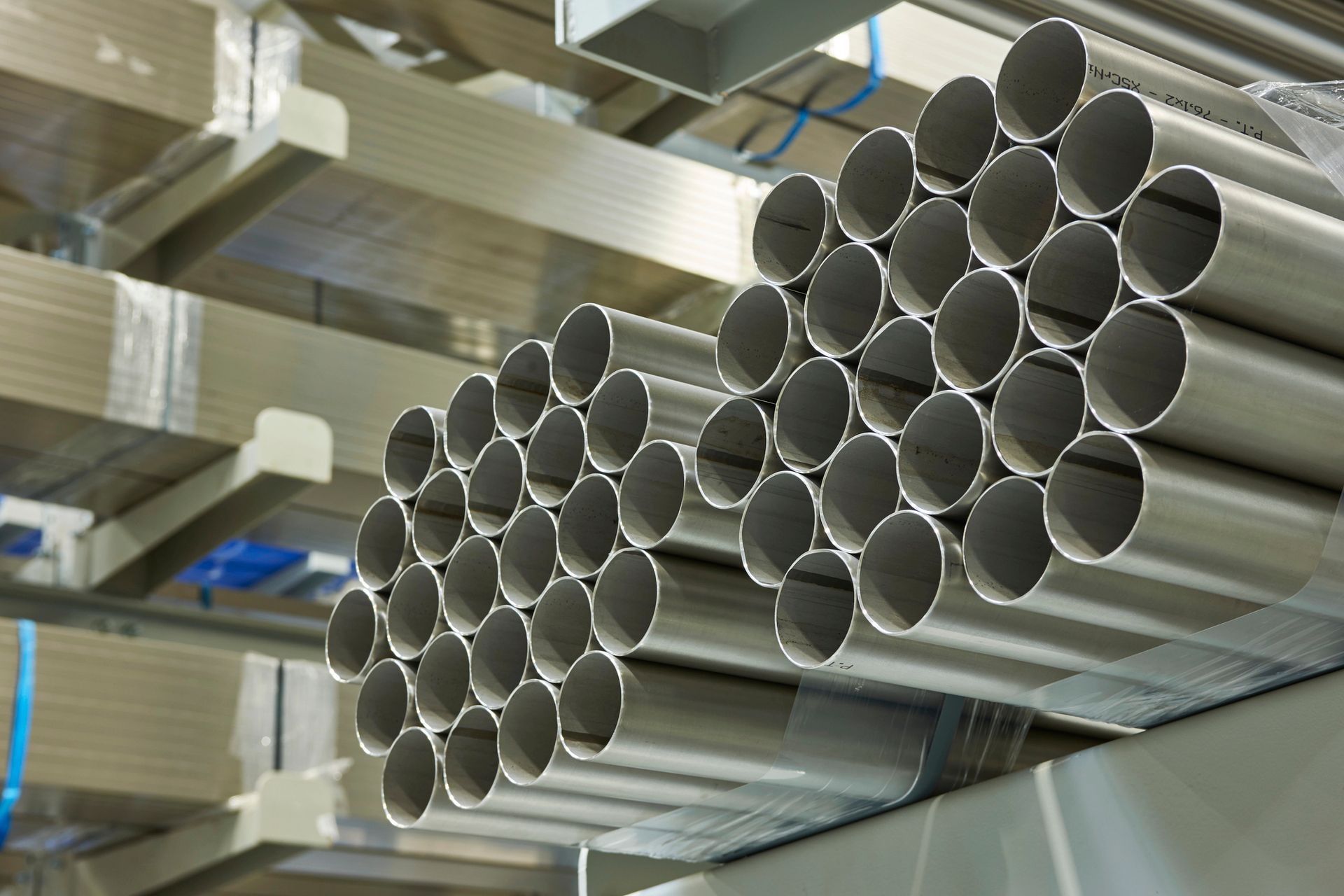- Macro Notes
- Posts
- Earnings Keep the Engine Running
Earnings Keep the Engine Running
Hello and welcome to Macro Notes, your go-to source for the latest macroeconomic trends, market-moving news, and key indicators to watch. We cut through the noise to bring you actionable insights in just a few minutes.

Stay Up to Speed on Macro News!
We now send our macro-focused news via text, so you’re never far from the latest market-moving action.

Double Digit Rockets (Sponsored)
Some stocks don’t just rise — they explode.
A new report reveals 5 stocks with the potential to gain 100%+ in the next 12 months, backed by strong fundamentals and bullish technical signals.
Past picks from this team have soared +175%, +498%, even +673%.¹
This free report gives direct access to the names and tickers — no fluff, just high-upside plays.
Available free until midnight tonight.

The Big Picture
Digital Assets
Big U.S. Banks Prepare for Stablecoin Shift as Regulation Nears

U.S. banks are preparing to launch their stablecoins as the federal government signals support for clearer crypto regulation.
These dollar-pegged digital tokens, which have long been a staple in the trading world, are now inching toward broader adoption in mainstream finance.
While adoption remains limited for now, several institutions are actively developing internal frameworks and testing infrastructure that would support issuance of institution-backed stablecoins.
The goal is to enable faster, lower-cost digital payments while maintaining compliance with emerging federal guidelines.
Momentum from Washington is accelerating the shift.
A series of bills advancing through Congress this week are expected to create a regulatory foundation for digital assets, including a dedicated framework for stablecoins.
For the banking sector, this opens the door to a hybrid system that combines traditional management with crypto-native functionality.
Stablecoins allow near-instant settlement and 24/7 transferability, advantages over conventional wire transfers and ACH systems.
Banks exploring this path aim to offer tokenized cash equivalents that can move across new rails while remaining within the insured and regulated financial perimeter.
For U.S. regulators and institutions alike, the push reflects a broader goal: integrating blockchain-based tools without ceding ground to unregulated alternatives.
The outcome could redefine how dollars circulate through systems that combine the transparency of crypto with the trust and compliance of banking.
As regulation comes into focus, America’s largest financial firms are moving to ensure they’re not left behind in the next evolution of digital payments.

Supply Chain
North America Moves to Reinforce Steel Supply Chain Against Global Dumping

Canada is tightening restrictions on steel imports from countries without free trade agreements, capping volumes at 50% of 2024 levels and applying matching tariffs.
The move aims to shield domestic producers from a flood of low-cost foreign steel, particularly from China and Turkey.
It mirrors growing U.S. concerns about overcapacity and supply chain vulnerability.
Imports currently make up nearly two-thirds of Canada’s steel consumption, a sharp contrast to the U.S., where the figure is closer to one-third.
That imbalance has left Canadian producers more exposed to pricing pressure and job losses, especially in the wake of recent U.S. tariffs targeting global producers.
For the United States, the policy alignment signals deeper North American cooperation on strategic materials.
By capping non-U.S. steel entering Canada and preserving existing U.S.-Canada-Mexico trade arrangements under CUSMA, both governments are reinforcing a continental steel framework that supports regional production, limits foreign dumping, and curbs reliance on Chinese supply chains.
Investors and industrial buyers should note the ripple effects of this recalibration.
Rising tariffs could shift global supply routes, increase input costs for manufacturers, and restore pricing power to North American mills.
At the same time, supply chain diversification remains critical as geopolitical tensions and subsidy-driven gluts continue to distort global markets.
Efforts to limit dumped steel, restore fair pricing, and protect regional capacity are now reshaping the broader economic foundation of North America’s industrial sector.

Gold Reclassified (Sponsored)
A quiet rule change just gave big banks the green light to treat one physical asset like cold, hard cash.
It’s not stocks. And it’s definitely not dollars.
One economist even called it “the only money banks trust.”
Meanwhile, most Americans are still stuck in risky paper assets.
But there’s a tax-free, penalty-free way to catch up—if you move fast.
Our FREE Wealth Protection Guide breaks it all down.

Trade
U.S. Magnet Supply Scramble Deepens as Imports from China Soar

U.S. companies are racing to secure rare-earth permanent magnets after a surge in Chinese exports provided a short-term boost to American inventories.
Imports from China jumped more than 660% in June following a partial easing of trade restrictions tied to a broader bilateral framework agreement.
Rare-earth magnets are foundational to industries ranging from electric vehicles and wind turbines to defense and robotics.
Despite calls to onshore key components, the U.S. continues to rely heavily on China, which controls roughly 90% of global magnet production and refining.
The spike in June shipments follows the introduction of new export license requirements by Beijing earlier this year.
While temporary approvals have helped U.S. firms replenish inventories, the underlying structural dependence remains unchanged.
Companies across advanced manufacturing sectors remain vulnerable to unpredictable supply chain shocks stemming from China's shifting export policies.
At the same time, magnet shortages over recent months have disrupted production lines in both North America and Europe, underscoring how supply bottlenecks in a single upstream segment can ripple across broader industrial ecosystems.
To reduce long-term exposure, the U.S. has stepped up investment in domestic mining, magnet recycling, and rare-earth refining.
However, these efforts face steep barriers in terms of time, cost, and technical complexity.
For now, Chinese export volumes remain a crucial lifeline for the U.S. supply chain, underscoring the urgency of building a competitive alternative that doesn't rely on adversarial trade dynamics.

Metrics to Watch
Tariff-Driven Inflation Hits Core Goods:
Core inflation rose 2.9% YoY in June, with tariff-sensitive categories like furniture and clothing spiking, the fastest monthly core goods increase in three years, per UBS.
Jobless Claims Dip Again:
Initial unemployment claims fell to 221,000 last week, indicating resilience in the labor market despite persistent concerns about layoffs and tariff-induced business cost pressures.
Dollar Hits 50-Year Low in First Half:
The ICE Dollar Index has just posted its steepest first-half decline since the early 1970s, down 13% against the euro, which is beneficial for exporters but unfavorable for Americans abroad.
The “Trump Effect” Emerges in Data:
From copper prices to immigration-linked labor tightness, signs of economic pressure tied to new tariffs and policy shifts are now clearly showing in federal surveys.

AI Surge (Sponsored)
While headlines focus on the same overhyped AI names, a bigger opportunity is taking shape — and it’s flying under the radar.
A new report reveals 9 AI companies with real U.S. operations, accelerating revenue, and deep AI integration. These aren’t speculative plays — they’re positioned to benefit from a massive shift in how and where AI is being built.
This free guide includes:
A chip supplier poised to fuel U.S. AI manufacturing
A cloud provider set to expand under new policy changes
A data firm with potential government contracts on deck
The early window on these opportunities may be closing — now’s the time to see what’s coming next.

Market Movers
🧨 Fed Independence Under Fire:
Markets are increasingly pricing in the risk of a compromised Federal Reserve, as President Trump continues to float the idea of replacing Chair Powell.
While the move hasn't materialized, the pressure alone has fueled volatility across long-term bonds, the dollar, and global credit markets.
Former Fed officials warn that a less independent Fed could erode credibility in future crises, with spillover risks for central banks globally.
📦 Trade Turbulence Drives Supply Chain Reshuffling:
With the U.S. pressing forward on new tariffs, Europe is scrambling to secure a last-minute deal to avoid a 30% levy. The standoff has reignited fears of a broader global slowdown.
Auto and industrial firms, particularly those with exposure to transatlantic supply chains, are now preparing contingency plans, while freight and logistics costs continue to rise across the board.
📉 Recession Risks Recalibrated:
Economists have dialed back their near-term recession forecasts, buoyed by better-than-expected jobless claims, solid consumer spending, and strong Q2 GDP projections.
But, the longer-term view remains clouded by rising tariffs, slowing immigration, and political volatility.
The manufacturing and real estate sectors are likely to face the sharpest headwinds in H2, even if the economy avoids a full-blown downturn.
🧓 Aging Economies Confront Growth Dilemma:
The OECD warns that aging populations and declining fertility rates could slow income growth in advanced economies for decades to come.
Countries such as Japan, Italy, and South Korea face particularly steep demographic challenges.
In response, policymakers are pushing to expand workforce participation among women, older workers, and migrants, but politics could derail those efforts just as labor shortages intensify.
🪙 Crypto Gets Its Capitol Breakthrough:
The House passed sweeping crypto legislation, including a stablecoin framework and a ban on central bank digital currencies.
The bills now head to the Senate, with President Trump expected to sign at least one into law on Friday.

Market Impacts
Equities: The S&P 500 and Nasdaq reached new all-time highs last week, as strong earnings and a solid retail sales print helped drive momentum.
PepsiCo, United Airlines, and Netflix all delivered positive Q2 surprises, reinforcing investor optimism that tariff-related headwinds haven’t derailed corporate profits, at least not yet.
Bonds: Yields edged slightly higher on Thursday last week as jobless claims and retail sales beat expectations.
The 2-year rose to 3.91%, while the 10-year held steady at 4.455%.
Markets briefly steepened the yield curve on renewed speculation that Trump might fire Powell, a scenario that unwound after he downplayed the idea.
Currencies: The dollar rebounded after a volatile week. The DXY climbed to 98.75, bolstered by rising Treasury yields and stronger-than-expected U.S. data.
Analysts see the recent move as a technical bounce following this year’s historic selloff. The yen weakened ahead of Japan’s election, and the euro slipped to $1.1582.
Commodities: Oil gained on the back of tight U.S. inventory data and renewed Middle East risk. Brent settled at $69.36 and WTI at $67.46 after U.S. crude stocks dropped 3.9 million barrels.
Drone attacks in Kurdistan and expectations of a more minor global output boost kept supply concerns elevated, though volatility remains high amid tariff and demand uncertainty.

Unseen Trends (Sponsored)
As we dive into Q2 2025, the stock market is buzzing with opportunities, and I’ve got the insider scoop just for you.
I’ve handpicked the Top Seven Stocks for this quarter, offering you a clear roadmap for growth as the year progresses.
Here’s what makes this guide indispensable:
High-Growth Sectors: Key industries poised to boom this summer.
In-Depth Analysis: Simplified insights to make wise investment decisions.
Expert Picks: Data-driven, not just guesses, for reliable potential.
Profit-Boosting Opportunities: Position your portfolio for a strong finish in 2025.
This isn’t merely a list; it’s your chance to seize the market’s hottest opportunities before they pass you by.

Key Indicators to Watch
📅 Leading Economic Indicators – Monday, July 21:
June’s LEI report will help assess whether the economy’s recent momentum is sustainable or simply stabilizing before a slowdown. A flat or negative reading would mark another soft signal for future growth.📅 Fed Chair Powell Speech – Tuesday, July 22:
All eyes will be on Powell’s remarks at the banking conference, where he’s expected to address inflation stickiness, Fed independence, and the economic impact of tariffs, without directly provoking Trump.📅 PMIs and Home Sales – Wednesday–Thursday, July 23–24:
Flash readings for services and manufacturing PMIs will give a snapshot of mid-summer activity. Existing and new home sales reports will show how higher mortgage rates and rising material costs are affecting housing demand.📅 Durable Goods Orders – Friday, July 25:
June’s headline number is expected to reflect a significant transportation-related surge, but the core figure (excluding aircraft and autos) will be a more telling indicator of business investment resilience.

Everything Else
Japan’s inflation cooled to 2.6% in June, down from a 29-month high, signaling progress in the country’s slow battle against price pressures.
Despite the noise around tariffs and politics, the U.S. economy continues to show signs of resilience, with retail sales, jobs, and corporate earnings painting a surprisingly solid picture.
Foreign investors are starting to rediscover value in the U.K. equity market, pouring into London’s lagging stocks after years of outflows.
China’s Commerce Ministry said that progress in trade talks with the U.S. could make a renewed tariff war “unnecessary,” despite lingering tensions over tech exports and agriculture.
San Francisco Fed President Mary Daly said it’s “reasonable” to expect two rate cuts before year-end, though she warned that persistent inflation could alter the pace.

That’s it for today’s edition—thanks for reading! Reply to this email with any feedback or let me know which macro trends or markets you’d like me to cover next.
Best Regards,
—Noah Zelvis
Macro Notes



